To everything there is a season, but for a brief stretch of October it is both a time for reaping and for sowing. The first killing frosts are also the last chance to get my bulbs underground.
After a few light freezes in central Pennsylvania, I’ve been harvesting potatoes, rescuing the last tomatoes and peppers, and doing triage on my butternut squash. I lost about half of them to a groundhog, but many gourds suffered only a passing gnash and have scabbed back over. So I’ll be happily making pies for weeks to come.1
Every fall I feel both edges of the reaper’s blade. I’ll be reveling in bounty one moment, and the next I’m mourning my Sungolds and Hungarian Hearts as I pull the dead vines. No matter how many jars of pickles, salsa, and sauerkraut I’ve packed in the cellar, I feel I could have done more. I made a lovely batch of raspberry jam and discovered that my Cornelian cherries make a fine jelly. But some of that fruit went to waste when I couldn’t keep up with it, and I can’t help thinking about the harvests that got away.
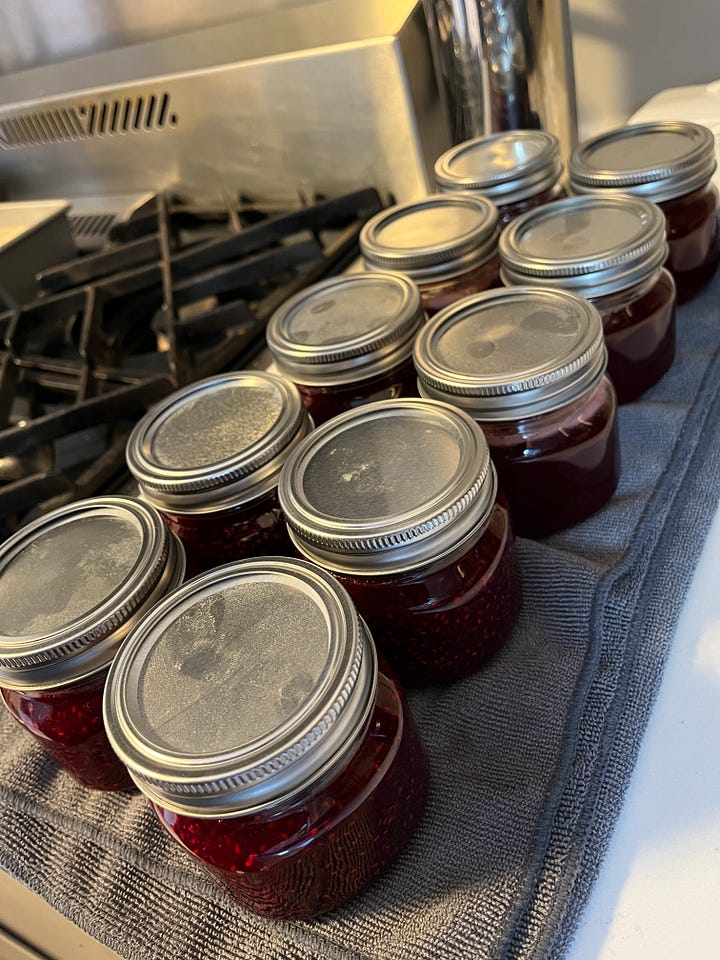
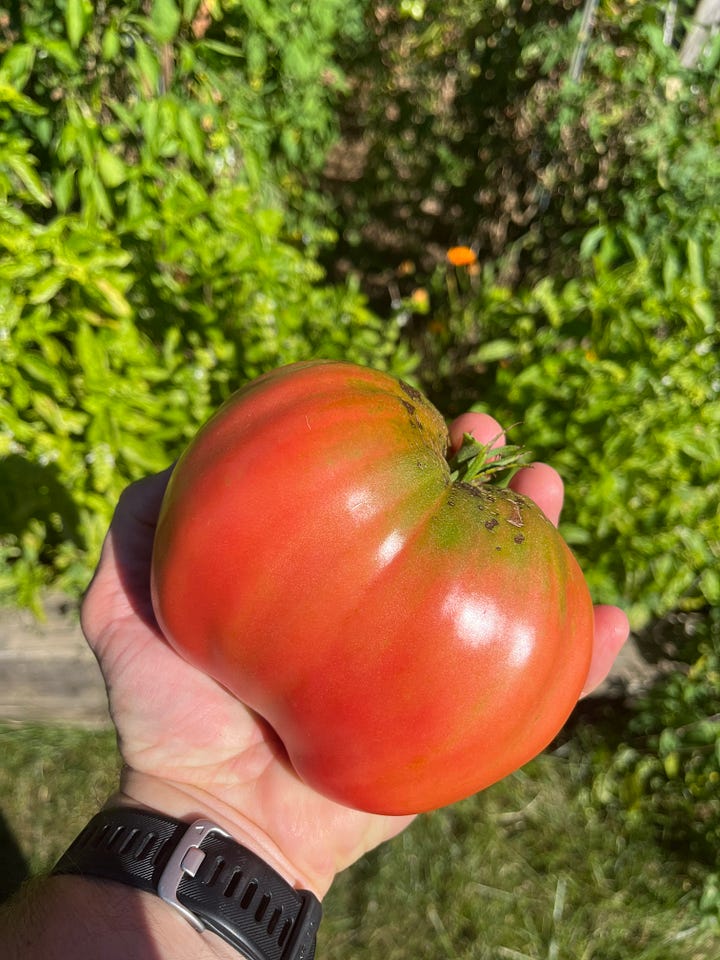
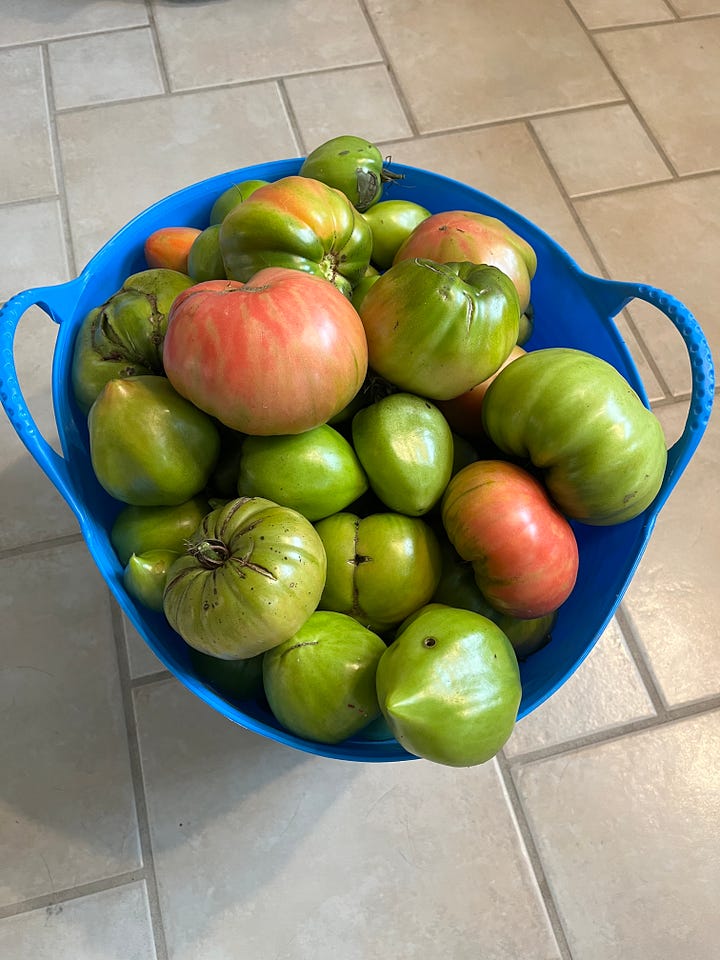

So it was a mercy when my garlic bulbs arrived. I missed the fall planting last year while house hunting, hoping to dodge the rental limbo that bedevils many a new divorcee. When I moved in last January, there was peace in knowing that the garden had been tended by just one other man for more than thirty years. I mean to be a worthy steward, so this year’s garlic planting felt ceremonial. It marks the end of my first growing year and shows faith in the next.
I coaxed my son out to the garden last week with his dump trucks. He’s been helping me dig potatoes, filling his front end loader and driving the spuds over to the bucket. Garlic didn’t sound very exciting to him, but the rototiller did, and he quickly fell under the spell of that churn of moist earth.
I traced four furrows with the hoe, then showed him how to break the cloves from the stem. Garlic clones itself, so only the biggest bulbs make the cut. Selway loves organizing things, and he kept a close count, separating each variety carefully from the rest.
One of the piles was White Northern. Also known as Northern White and German White, this variety can withstand the coldest winter. I bought a bag of White Northern from a farmer friend in Iowa, and I grew ten crops from that batch, cloning my own harvest every year. According to Mad River Garlic Growers, a New York farmer claimed that his White Northern bulbs survived a cold snap as brutal as -60 degrees Fahrenheit. I think of this as my immigrant variety, keeping my ancestral ties to Germany and Czechia alive. It is perhaps the oldest of my heirlooms.
I’m experimenting with two new (to me) varieties this year. Georgian Crystal was developed not in the American South, but in the Republic of Georgia, near the Black Sea. It is also known as Cichisdzhvari, for the mountain region where it was first gathered for domestication. Like the White Northern, Georgian Crystal is prized for its large cloves and its hardiness.
Rasa Creek Farm gives it this charming personality profile:
Slow as a mule on the long intermountain trails of its homeland, Georgian Crystal makes its way into the blood and marrow, carrying the heritage of generations upon its strong back. A gentle creature, Georgian Crystal welcomes children and the sensitive of tongue to lean back and enjoy, not battle with sucking breath and watering eyes to tame a wild, bucking beast.
The youngest variety I’m trying is the Montana Giant. Chosen for obvious sentimental reasons, this strain was apparently developed in the Hyalite Mountains near Yellowstone and is now bred in Kalispell. But the Giant has a slippery history, and the more I learn about it, the less authentically Montanan it seems.
Take, for instance, the GroEat farm near Bozeman, which sells Montana Giant and decorates its website with AI gems like this. I’ve never thought of garlic as particularly breastlike, but I guess it takes all kinds.2
It’s possible that even my heirlooms may not be what they seem. According to Philipp Simon, a professor of horticulture at the University of Wisconsin, garlic is notoriously difficult to identify and distributors often sell identical clones under different names:
Clones held by growers today have been maintained as separate entities, but a system to confirm or refute the identity of a given clone has not been established. Only with several seasons of careful field observation can garlic clones be identified, and even then ambiguities often remain.3
All three of my varieties are porcelain types, so there might be no difference between them at all. Or they might be something else entirely. Just as most attempts at tracing ancestry end in mystery, so too my garden is a cradle of myth as much as history.
The metaphor has worn thin by now, but every time I turn the ground and trace my furrows, it feels like a burial, even though I know it’s the reverse. There’s a little of the ars moriendi in pushing those bulbs down, candle up, then mounding with soil.
Selway and I planted roughly 80 bulbs, which should give us all we need for our pickles, salsa, and hot sauce next year with enough left over for seed. If I steward my garlic well, I may never need to buy it again. It’s not quite as impressive as my relatives who fill their freezers with venison, elk, and moose, but I take a quiet pleasure in removing myself from someone’s budget spreadsheet whenever I can.
My garden is a paradox of presence and retreat. I’m often seeking relief from the world when I sink my hands into dirt, but at the same time I’m trying to climb out of my head down into the here and the now. In that way, my garden is much like Willa Cather’s conception of art: a place where we seek refuge from ephemera by affirming what endures.
In a 1936 letter published by The Commonweal, Cather addresses a reader who wonders if art should offer more than escape.
When the world is in a bad way, we are told, it is the business of the composer and the poet to devote himself to propaganda and fan the flames of indignation. But the world has a habit of being in a bad way from time to time, and art has never contributed anything to help matters except escape…
At the moment, we hear the same cry which went up during the French Revolution: the one really important thing for every individual is his citizenship, his loyalty to a cause—which, of course, always means his loyalty to a party. The composer should be Citizen Beethoven, the painter Citizen Rembrandt, the poet Citizen Shelley, and they should step into line and speed their pen or brush in helping to solve the economic problems which confront society…
In the great age of Gothic architecture sculptors and stone-cutters told the same stories (with infinite variety and fresh invention) over and over, on the faces of all the cathedrals and churches of Europe. How many clumsy experiments in government, futile revolutions and reforms, those buildings have looked down upon without losing a shadow of their dignity and power of their importance? Religion and art spring from the same root and are close kin. Economics and art are strangers.4
A garden is much like those Gothic cathedrals, the same story told repeatedly with new twists every year. I don’t really garden to proselytize about climate change. If I did, I’d never stick with it. I do it because it connects me to sources of wonder, because some garden rituals have not changed in a thousand years, because I cannot buy a better meal anywhere than I get from my own Brussels Sprouts browned in bacon drippings with a little garlic added near the end.
I think I have always been more of a pagan than a Christian because I cannot believe that the physical is an imperfect copy of spirit. There’s nothing higher than a fresh cucumber or a bowl of strawberries still warm from the sun. Spirit must come to earth, must come from earth, before it can take flight.
A priest says that the bread and the wine are Christ’s body and blood. A gardener knows that garlic is just one form that eternity takes, forever cloning itself spring after spring. The concept derives from the bulb, not the other way around.
So there’s nothing quaint about planting with my son while a frosty breeze blows across our necks. We aren’t turning toward the past, we are leaning into the long arc of time, away from the endless but infinitely fleeting scroll.
Today’s essay is free, but I’m offering a discount on upgrades through the end of December while I think through plans for next year. If you are already a full member, the discount should apply to gift subscriptions, too.
Read more garden essays ⬇️
If you haven’t tried it, butternut pie is superior to pumpkin.
Even the theme song, which autoplays on the About page, seems fake. Is there really a “Billie and the Hardnecks” band? But this, too, is Montana and has been since the Gold Rush days.
From Simon’s essay, “The origins and distribution of garlic: How many garlics are there?,” for the USDA.
Read the full letter, “Escapism,” at The Commonweal.





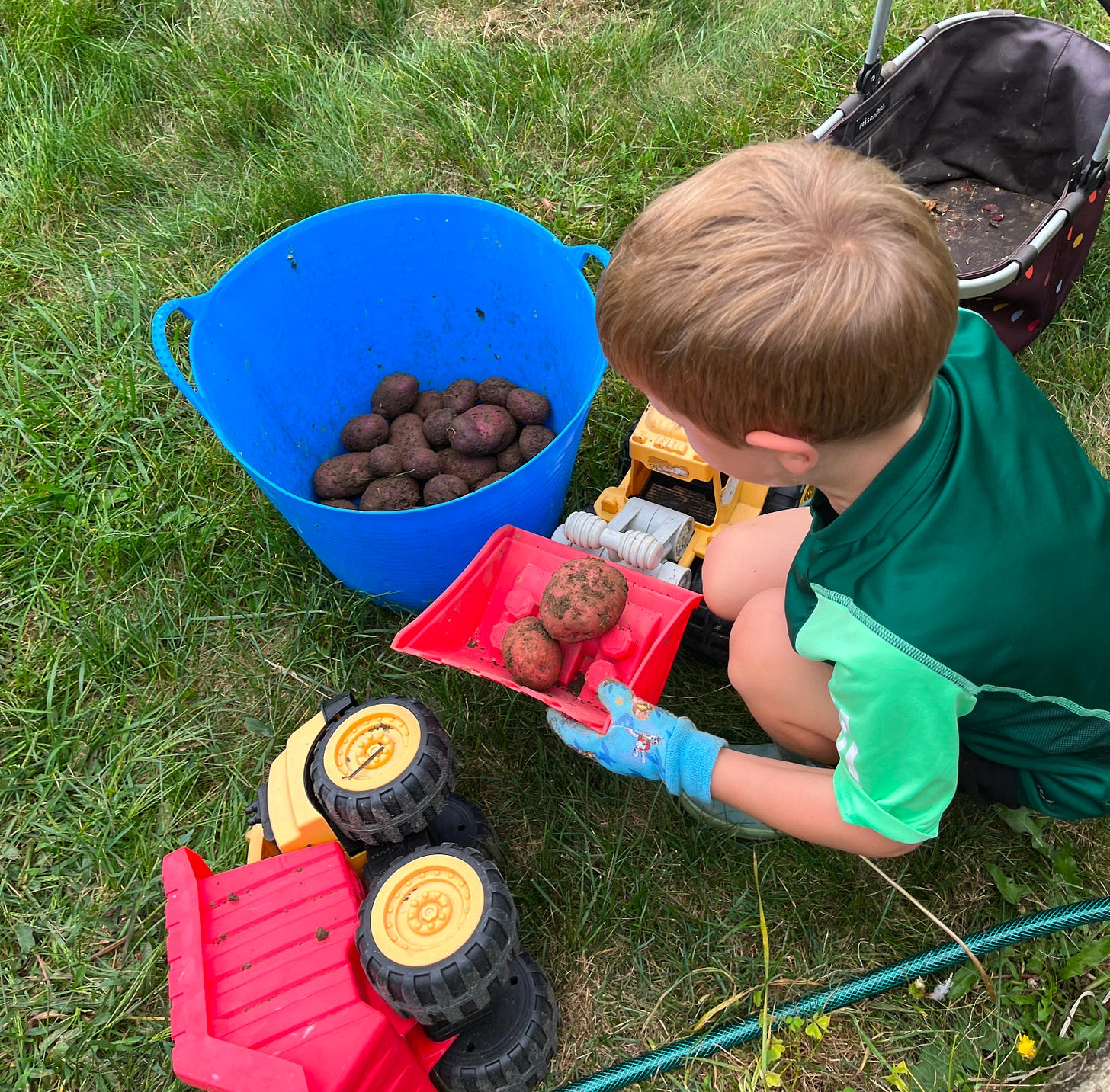
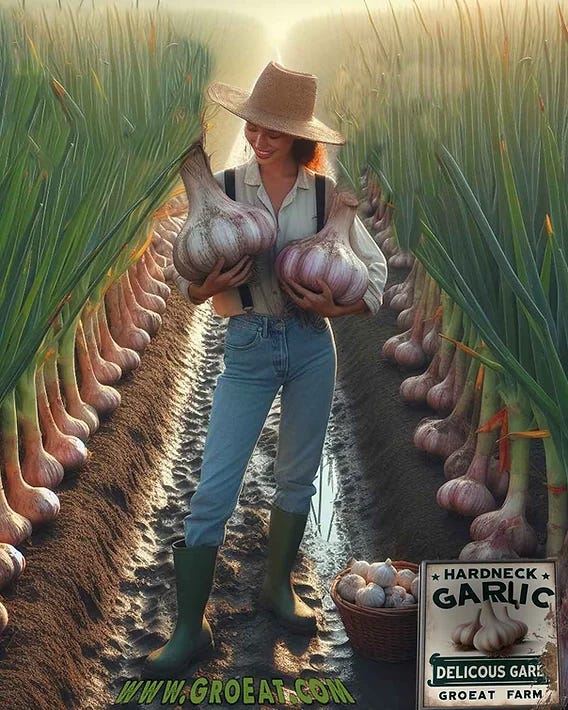



Absolutely lovely. And your gardening of treats to which there is a season makes me a bit jealous and nostalgic. We grow some neat things in the tropics, too, but not butternut squash or sour cherries.
Oh, my -- I wasn't trying to point to anything that needs to be corrected. I was noting an analogy between the wonder of nature and the belief of the church that I grew up in, and realizing that they are also both a similar practice of faith. Otherwise, I prefer to keep religion out of my garden;)